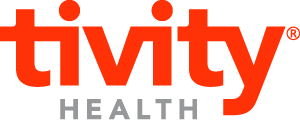
Two years ago, when CMS, Centers for Medicare & Medicaid Services announced that Medicare Advantage plans would have more flexibility to offer supplemental benefits that address social determinants of health (SDOH), approximately 40% of payers rolled out new programs. Now well into 2020, there will be an increased focus on these efforts like never before as health plans look to identify the types of benefits they’ll offer, decide on implementation strategies and determine the right partners who can innovate and flex with the ever-changing needs of their members.
Social Determinants of Health: Doing Good Is Good Business
With approximately 10,000 baby boomers aging into Medicare every day, and 9 million seniors who live in poverty, addressing SDOH is not only a nice to have, feel-good initiative, but a social imperative that can improve health outcomes, longevity and quality of life.
In fact, according to a May 2016 study in Health Affairs, investing more in social services relative to health care spending results in better health outcomes for chronic conditions such as obesity and Type 2 diabetes.
When it comes to solving for SDOH like food insecurity, social isolation and loneliness, there’s no magic bullet. Yet health plans and the industry can collaboratively make a significant impact with programs that are accessible and sustainable.
As health plans look to identify strategies that will attract and retain new members and drive engagement, partnering with organizations that offer cost-effective, scalable solutions will be those that see the greatest ROI, yet there are some factors to first consider.
1. Reach, Infrastructure and Distribution
According to a 2019 report by Feeding America, 5.5 million seniors, or 7.7% of the senior population, faced food insecurity in 2017. What’s more, as many as 1 in 3 patients admitted into the hospital are dealing with malnutrition, a known risk factor for hospital readmission.
Research shows however, that nutrition supplementation and support in the hospital reduces 30-day readmission rates, a quality measure that affects Star ratings and measures in the Hospital Readmissions Reduction Program.
There’s no question that organizations that work at the local level to address food insecurity and malnutrition are vital and can inform work at the national level. Yet many local organizations are constrained by limited funding to run their programs and may not have the resources to have the widespread impact that is needed.
When identifying partners, health plans should look for those that have the reach, infrastructure and distribution, can scale to multiple markets and have the platform and voice to address these issues in a meaningful, impactful way.
2. The Consumer Experience
When addressing social determinants of health, it’s important to remember that health plans are solving problems for real people who have the similar needs and preferences as others, regardless of their zip code, income level or health status.
While some organizations can meet the immediate needs of members, it’s important for health plans to make sure they find partners who have the resources to take a holistic view of each member and also provide an easy, seamless and positive consumer experience, much like a retail brand like Walmart might offer.
With regard to nutrition solutions, the optimal result will involve more than just delivering food to someone in need. Providing necessary, appropriate and appealing food and nutrition products, and offering a solution that is scalable, will allow health plans to reach more people and drive the greatest ROI.
The right partner should offer cost-effective, delivered meals that are healthy, designed by nutritionists to meet the needs of the chronically ill or those recovering from a hospital admission, that are also delicious.
3. Targeted, Personalized Solutions
Together, loneliness and social isolation represent a key social determinant of health and are considered a modern-day epidemic. People who are affected are at an increased risk of premature death by 29%—more than obesity or smoking 15 cigarettes a day. Members who are socially isolated in particular, have $134 more per month in Medicare costs than for those who are connected.
One of the areas in which research shows the most promise in addressing loneliness and social isolation is fitness and exercise. In fact, according to a November 2018 study we conducted with the MIT AgeLab, of 3,000 Medicare Advantage members who participated in the SilverSneakers® program, significantly fewer members suffered from social isolation (20% less) and loneliness (25% less).
We know however, that not every member will be motivated or interested in going to the gym, taking group fitness classes or even exercising on their own. Members also have their own barriers such as physical capabilities, environmental factors and lack of resources. Offering non-fitness events and activities free of cost in the community can be an effective way to engage them.
For Medicare Advantage plans who are looking for partners who can design and manage community programs and events that are tailored according to members’ needs and limitations, it’s important to identify organizations that use a data-driven approach to identify and engage the members they’re looking to target with effective solutions for a variety of preferences and needs.
4. Collaboration
Social determinants of health include a wide range of needs and solving for them cannot be achieved by one organization. Additionally, health plans are continuously under pressure to manage down the number of vendors they’re working with to control their administrative burden.
As Medicare Advantage plans look for solutions, they should first attend forums where thought leaders convene to address SDOH.
For example, the Connectivity Summit on Rural Aging, brought together a strong coalition of stakeholders to talk about demystifying SDOH and utilizing resources and partnerships to solve for them.
When seeking out solutions, health plans should look to organizations that have an acuity and track record for leveraging partners and those who want to bring the best ideas to the table, even if they weren’t created by them.
With the rate of innovation that’s occurring, the best solution for an organization’s unique strategy is likely the combination of capabilities from large and small organizations. For example, local organizations such as the Area Agencies on Aging have established trust in the communities they serve and can seek out partnerships with larger organizations to achieve their mission and create sustainable programming for local seniors. Oftentimes, the larger organizations can play a central role in weaving together features into a cohesive experience.
5. Scalability
Regardless of where they may be in the journey for offering benefits that solve for SDOH, it’s important for health plans to think long term. Although their efforts may be local at first, they must be able to replicate their models when they’re ready to expand into other markets. Therefore, when identifying potential partners, they should look to those that offer scalable solutions, especially when those solutions offer options that can address a broad range of needs and preferences.
At Tivity Health, we are on a mission to impact key social determinants of health and revolutionize a new approach to health and wellness. To learn more about our solutions for Medicare Advantage plans, contact us today.














